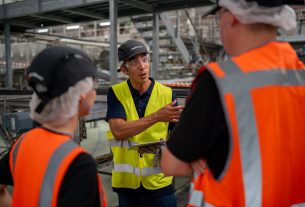The phrase ‘new normal’ is very popular at the moment. In the oil and gas (O&G) sector, we have had to adapt to many a new normal over the years. ‘Lower for longer’ was meant to be the new normal with prices in the $60-70/bbl range, before they went much lower than that. Now we have a different type of new normal – one fundamentally changing our working practices as we look to ward off the COVID-19 threat. However, though this time it really is different in many respects, one crucial thing remains the same: our sector is a tremendously inventive and a resilient one, and there is no reason to think we can’t weather this storm.
Like many companies in the O&G sector, we at PJ Group are multinational, with various premises in place as far flung as the UK, Italy, India and Singapore – all countries that have been affected differently at different times by the virus. We have learned a lot about how to respond by observing these differences – both for office-based work and manufacturing – and hopefully some of those observations can be useful to others in the industry.
The desktop
For those of us in desk-based roles, we have been lucky in many ways. We are easily able to isolate, our commutes have been slashed to a short amble to a study or the kitchen table, and many of us are able to spend more time with families. However, that is not to say there aren’t difficulties.
The first part of the PJ Group business to be affected by COVID-19 was our Singapore office. The government announced a lockdown that wasn’t as strict as some have proved to be, so we were able to give our employees a choice whether to work at home or in the office. Most chose to work at home, in part because we already had an embedded culture of videoconferencing for international collaboration, and already used cloud-based systems. Everyone had a laptop and was able to work remotely. It would be absurd to say we foresaw a risk like COVID-19 and planned for it – but it does go to show that inbuilt flexibility is also inbuilt resilience.
The early experience in Singapore meant that we knew what to expect when the UK entered its own lockdown. With time to plan ahead, we were able to set-up all remote staff with a full IT set up, including desktop PCs and dual screens so that they were equally well-equipped as if they were in the office. When this was successful, we retroactively did the same for our Singaporean colleagues – using our experiences in individual locations to inform our group-level strategy.
The result has been astounding. Employees have proved themselves dedicated to their work – resilience and focus has been brilliant. Although it is difficult to measure remotely, to all appearances it seems many of our engineers are performing even better than before, and I think all of us have benefited from having to more consciously flex our ‘communication muscles’ rather than rely on the casual and easy conversation that comes in an office environment. Time will tell on the eventual success of this model, but all early indications are that if you empower intelligent people with the right tools to do the job and place your trust in them, then they will deliver – surely an encouraging sign in these difficult times for the O&G industry.
The factory floor
However, we are not ultimately an information-based company. We are in the business of manufacturing and supplying valves. Perhaps it’s theoretically possible to assemble a valve in the living room, but I doubt it is a practical solution. That means a great deal of our work is unavoidable physical and conducted on-site.
This means tough decisions about which facilities must be closed and when they can be reopened. In our case, we were able to reopen our multi-turn factory two week ago and our quarter turn factory received government permission to reopen on the 18th May. We were able to do so thanks to our team’s efforts to redesign work patterns and layouts, and wholehearted embrace the WHO guidelines to make sure that we both satisfy our customers and keep our colleagues safe.
Indeed, there are many things you can do to minimise work required on the factory floor. For example, while final assembly and QA testing must be done on site, it’s worth considering if other tasks leading to that stage can be moved to other parts of the supply chain, perhaps where there has been less of a COVID-19 impact. Likewise, we have worked closely with our supply chain to ensure we have failover backups, so if one of our suppliers or one of our facilities is locked down, there are ways to keep products flowing. Ultimately, it comes down to communication and partnership – which also applies to customers.
Customer partnership
Different customers are affected by the virus in different ways. Some operators and EPCs are progressing much as normal, others are struggling with reduced staff numbers. This can affect project timings, and customers may not be able to take delivery at the dates previously agreed.
Deep engagement with the customer means you can work with them to understand when the site is available to receive goods, to work in reprioritising orders, and to collaborate in other ways to keep projects on track. Just as communication extends through our own organisation, it must extend down through our own supply chain and upwards to our customers.
However, for this to be successful, there needs to be an element of trust, which ultimately comes from a track record of partnership. Imagine that we are supplying a project that specifies a particular actuator, which is no longer available because of COVID-19. We can work with the customer to propose an alternative that meets the specifications and is available. However, if there is low trust, that change then gets bogged down in reapprovals and checks that may mean the project is ultimately still delayed. If there is a pre-existing collaborative working relationship between our engineers and theirs, then that process is streamlined, and things stay on track.
Cometh the hour, cometh the tech
Amidst all the difficulties, it’s worth taking a moment to acknowledge that in some small respect the timing of this pandemic is fortunate (though of course it would be better to not have one at all). Had this occurred ten or even five years ago, the technology wasn’t in place for this scale of mass remote working. Digitalisation has been a lifeline during this period.
And if we turn that reflection on its head, we can ask what we can do to be even better prepared for any future similar events; to build resilience into our industry. From this perspective, it’s reassuring that the pre-existing efficiency trends towards digitalisation and automation throughout the O&G sector has put us in a good position. It is not an easy time to look forwards when immediate survival is more pressing, but we should be encouraged that the right things to do now should also be the right things for the future of our industry.





